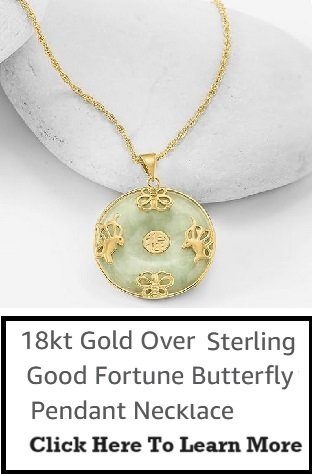Gold has been cherished for millennia, revered for its beauty, rarity, and symbolic power. Among the various gold alloys used in fine jewelry, 18kt gold holds a special place. This particular blend of gold, consisting of 75% pure gold and 25% alloyed metals, has become a standard for luxury and craftsmanship. In this article, we'll explore the rich history and enduring significance of 18kt gold in fine jewelry.
The Origins of Gold Jewelry
The use of gold in jewelry dates back over 6,000 years, with some of the earliest examples found in ancient Egypt, Mesopotamia, and the Indus Valley. These early civilizations prized gold for its luster, malleability, and resistance to tarnish. Gold quickly became a symbol of power, wealth, and divine favor, often reserved for royalty and the elite.
Early Gold Alloys
Pure gold, or 24kt gold, was initially used in its natural form, but its softness posed challenges for crafting durable jewelry. To overcome this, ancient goldsmiths began alloying gold with other metals, such as silver and copper, to create stronger and more versatile materials. These early experiments laid the foundation for the creation of 18kt gold.
The Development of 18kt Gold
The concept of karat purity, which measures the proportion of gold in an alloy, emerged as goldsmiths refined their techniques. By the Middle Ages, 18kt gold had become a popular standard in Europe, especially among the nobility. The 18kt composition—containing 75% gold and 25% other metals—struck an ideal balance between purity and durability.
The Renaissance and Beyond
During the Renaissance, 18kt gold saw widespread use in the creation of intricate and ornate jewelry. This period marked a revival of classical art and craftsmanship, with goldsmiths producing elaborate pieces that showcased the beauty of gold. The use of 18kt gold continued to flourish in the Baroque, Rococo, and Neoclassical eras, as jewelers across Europe created masterpieces for royalty and the aristocracy.
The Significance of 18kt Gold in Fine Jewelry
A Symbol of Prestige
18kt gold has long been associated with luxury and prestige. Its higher gold content compared to 14kt or 9kt gold gives it a richer, warmer color that is instantly recognizable. In the world of fine jewelry, 18kt gold is often chosen for its aesthetic appeal and its ability to elevate the status of the wearer.
Durability and Workability
One of the key reasons 18kt gold is favored in fine jewelry is its balance of durability and workability. The 25% alloyed metals—typically including copper, silver, or palladium—enhance the strength of the gold without compromising its natural beauty. This makes 18kt gold ideal for crafting intricate designs, setting gemstones, and creating heirloom-quality pieces.
Cultural and Religious Significance
Throughout history, gold has held deep cultural and religious significance. In many cultures, gold is seen as a symbol of purity, wealth, and divine power. In Hinduism, gold is considered an auspicious metal, often used in wedding jewelry and religious ceremonies. In Western traditions, 18kt gold is a popular choice for engagement rings and wedding bands, symbolizing the enduring bond between partners.
A Global Standard
Today, 18kt gold is recognized as a global standard for high-quality jewelry. It is widely used by luxury brands and master jewelers, from Europe to Asia. Its consistent quality and timeless appeal make it a preferred choice for those seeking the finest craftsmanship and design.
The Evolution of 18kt Gold in Modern Jewelry
Innovation in Design
As jewelry design has evolved, so too has the use of 18kt gold. Modern jewelers continue to push the boundaries of creativity, using 18kt gold in innovative and unexpected ways. From minimalist designs to bold statement pieces, 18kt gold remains a versatile and sought-after material in contemporary jewelry.
Ethical Considerations
In recent years, there has been a growing emphasis on ethical sourcing and sustainability in the jewelry industry. Many jewelers now offer 18kt gold that is responsibly sourced or recycled, ensuring that the beauty of gold is matched by a commitment to environmental and social responsibility.
The Role of Technology
Advancements in technology have also influenced the use of 18kt gold in jewelry. Laser engraving, 3D printing, and other cutting-edge techniques have opened up new possibilities for intricate designs and personalized pieces. Despite these innovations, the traditional craftsmanship associated with 18kt gold remains highly valued.
Conclusion
The history and significance of 18kt gold in fine jewelry are deeply intertwined with the story of human civilization. From ancient times to the modern era, 18kt gold has been a symbol of wealth, power, and beauty. Its unique blend of purity and durability has made it a favorite among jewelers and collectors alike. Whether as a piece of history, a cultural artifact, or a statement of personal style, 18kt gold continues to hold a special place in the world of fine jewelry. As both an enduring material and a symbol of luxury, 18kt gold jewelry is more than just an accessory—it is a timeless investment in artistry and tradition.
18kt Gold Jewelry Related Articles
- Choosing Between 18kt and 14kt Gold: What’s the Difference?
- How to Care for Your 18kt Gold Jewelry: Tips for Longevity
- How to Match 18kt Gold Jewelry with Your Wardrobe: Style Tips
- How to Spot Genuine 18kt Gold Jewelry: A Buyer’s Checklist
- Stylish Ways to Wear 18kt Gold Jewelry for Every Occasion
- The History and Significance of 18kt Gold in Fine Jewelry
- The Top 5 Trends in 18kt Gold Jewelry for 2024
- The Ultimate Guide to Buying 18kt Gold Jewelry: What You Need to Know
- Top 10 Timeless 18kt Gold Jewelry Pieces Every Woman Should Own
- Why 18kt Gold Jewelry is the Perfect Investment for Your Collection


